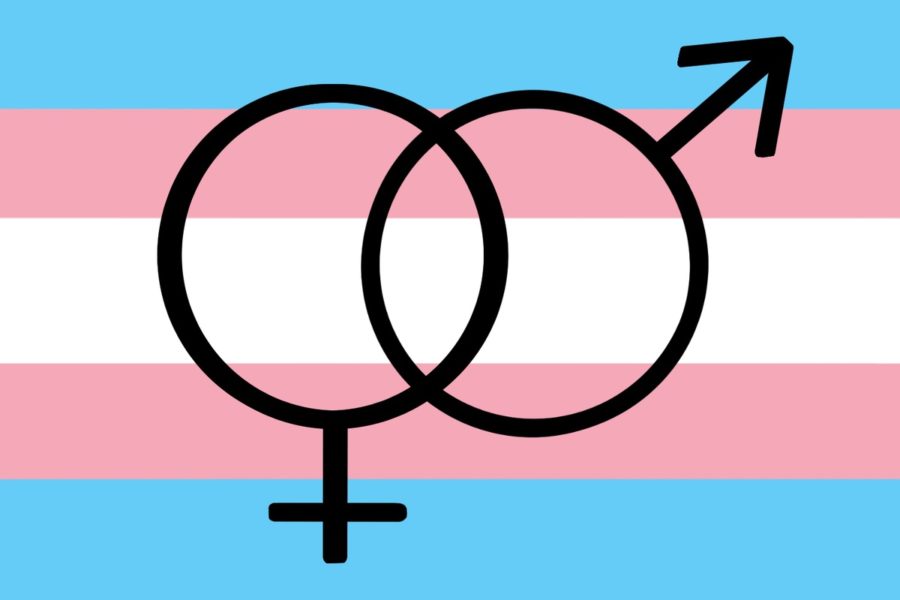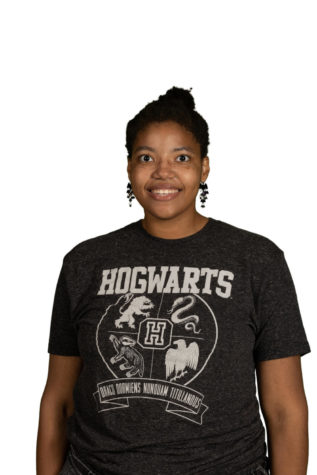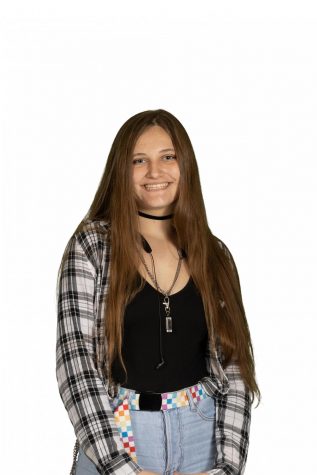Pro pronouns
Photo by Hannah McElhiney
A transgender pride flag lays behind the male and female symbols. More and more students nowadays are questioning their gender identity and which pronouns suit them best.
March 10, 2022
As the world becomes more open minded toward the LGBTQ+ community, more and more people begin to discover how they identify in terms of both gender and sexuality. One of these branches of gender identification is the nonbinary community.
Nonbinary refers to a person who doesn’t fully connect with either end of the gender binary and wishes to identify outside the social constraints that go along with them. Though the world may be becoming more open toward these communities, there are still obvious obstacles that these people must face. First, they try to figure out how they identify.
“It’s kind of hard to explain. It’s just the idea that I wanted to experiment with different pronouns, because I would hear people call me by they/them every now and then if they didn’t already know my pronouns. For some reason, it just made me happy.” Junior J Doe* said. “I don’t exactly identify with she/her pronouns, just because of the societal standard of what is and isn’t feminine and, as I don’t identify with he/him at all either, I wanted to go by they/them.”
It is a common misconception that people who identify as nonbinary always use they/them pronouns, but the community varies widely. For example, some people relate with he/they or she/they pronouns.
“Sixth grade, I [started to] realize [I don’t like female or male pronouns] and started experimenting with she/they pronouns, and as years went on, I started going by he/him,” senior Alex Feck* said. “He/him didn’t really fit, so I used he/they, and he/they really stuck.”
Furthermore, people in the nonbinary community have even started to branch outside the typically used pronouns of she, he and they and created new neo pronouns to identify themselves with.
“I don’t 100% understand neo pronouns. If someone tells me that they go by neo pronouns and tells me what they are, I’ll respect them, but I don’t necessarily understand it.” Doe said “It’s sort of like I don’t understand any other language [except] English, but it’s not like I’m going to hate on people who speak [other languages]. If it makes them happy, if it’s what they want, then I don’t care. I’ll call them whatever they want.”
With people changing pronouns and creating new ones, it can be overwhelming for those outside the community that simply want to talk to and about their friends and family using the language they are comfortable with. Moreover, some people find it difficult to ask strangers their preferred pronouns out of fear of being rude and upsetting them.
“Just have a normal conversation with them first, and then gradually go into [asking them their pronouns]. I know most people make it seem rude to ask somebody their pronouns, but I think if you just go up to them [and ask], ‘Hey, what are your pronouns, if you don’t mind me asking’ [that would be ok],” Feck said. “Going ‘Hey, you’re a girl, right?’ or ‘you’re a guy, right?’ and assuming their gender whenever you go talk to them is [not appropriate].”
This new way of identifying people also begs a question: what about terms like mother, father, aunt and uncle? Terms that don’t already have gender neutral counterparts?
“For now I think people are just going to use parent, or just some [variation] like that, to represent or to refer to their parents who are nonbinary,” Doe said. “Eventually I’m sure that we’re going to come up with a new term that is gender neutral, or there might already be one that I just don’t know of yet.”
Another controversey that the nonbinary community faces is the problem of their outward presentation. Some nonbinary pepole tend to variate how they dress, which can led to unintentional misgendering or someone invalidating their gender identity because of their clothes.
“People wear what they want and present how [they] want, [and that] isn’t anybody else’s business,” Feck said, “but if you dress more [masculine], people can assume you are a [boy] when you are [nonbinary]. Clothing doesn’t represent who you are. It’s just whether you feel comfortable or not in your clothes.”
Although the nonbinary community is becoming more known and accpted in the world, they are often discriminated against as much as their binary trans counterparts.
“I haven’t [experienced] much in terms of [discrimination]. From what I’ve seen, people understand trans men and trans women more than nonbinary people, so they tend to be more accepting.” Doe said. “There will always be people who don’t accept either one, [but] this is all based on people’s experiences as well. My experience with people in terms of who does or does not accept it and what they do is different from other people’s.”
*Names used in this story are not the real names of the person interviewed
















